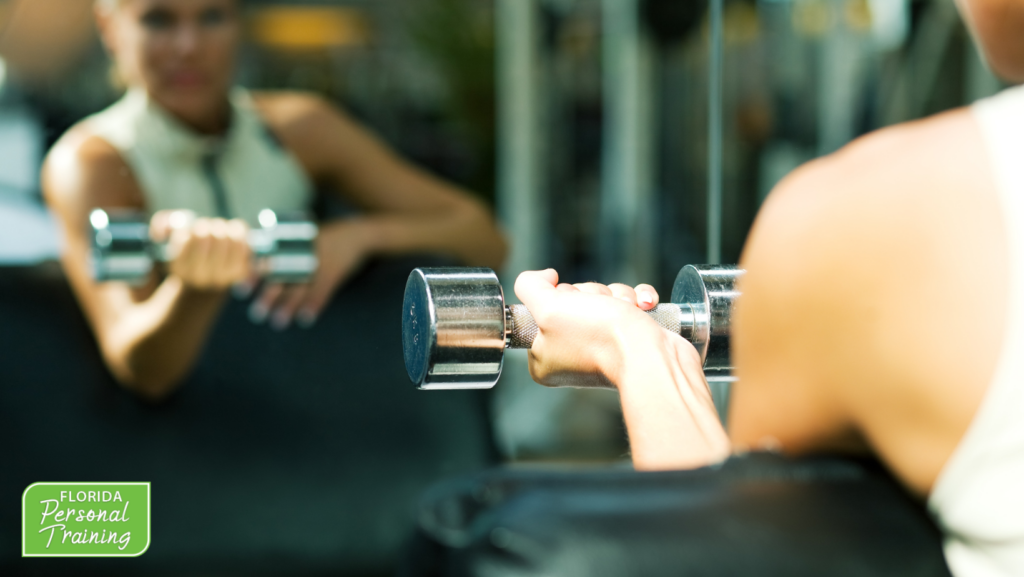Sometimes it feels like the number of things that stop working in your body directly correlates to the number candles on your birthday cake.
But you can regain some control in a number of ways — and improving your strength is one of them.
Muscle strength is important for bone health, balance and just being strong enough for daily activities, such as climbing stairs or carrying groceries.
Regular muscle strengthening has also been shown to help you manage blood pressure, blood sugar and blood cholesterol levels, as well as prevent and control heart disease and type 2 diabetes.
Research also shows it’s good for your brain, according to Professor Maria Fiatarone Singh, a geriatrician at the University of Sydney.
“We’re currently looking to see what the exact mechanisms are, but there is evidence that both improvements in cognitive function and depressive symptoms in older adults are linked to the amount of strength gains or intensity of the strength training,” she said.
Why it’s downhill from 30
Each decade from the age of 30 we lose 3 to 5 per cent of the muscle mass we naturally carry, which causes us to lose muscle function — a condition called sarcopenia.
But this doesn’t mean you necessarily end up frail, Professor Fiatarone Singh said.
“There are studies on men in their 70s who’d been lifting weight for 15 to 20 years and their muscles looked identical to that of 20-year-old men in terms of size and strength,” she said.
The really good news — it’s never too late to get started, even if you’ve never picked up a weight in your life.
“We have muscle biopsies of people over 100 years old and you can see changes in their muscle cells, even at that age,” Professor Fiatarone Singh said.
Size matters – but strength matters more
While having big muscles might hold some appeal for some of us, it’s your strength that really matters when it comes to functioning well in old age.
And if you’re training right, getting stronger is relatively easy, even if your body type doesn’t build muscle easily.
So what’s the right kind of training? That depends on your fitness and health goals.
High-intensity resistance training is the best way to increase and maintain muscle function.
The best results come from high-intensity interval training, which is lifting weight that’s 80 per cent or more of the maximum amount you can physically do.
Two, preferably three, sessions a week is ideal and the most important thing is intensity and progression — so increasing the amount of weight you’re lifting once it stops feeling hard to lift.
If you can tolerate it, increase your power as well as strength by performing high-velocity, high-intensity movements.
An example of that would be lifting a heavy weight really fast (concentric phase), then slowly lowering it down (eccentric phase).
If you don’t have arthritis or other joint problems, adding high-impact movements, like jumping, improves bone density, can help to prevent osteoporosis.
The importance of getting guidance from an experienced Exercise Specialist, especially if you’re new to lifting weights, have injuries or suffer any other health issues, cannot be underestimated.
When training you need to have a double-barrelled perspective.
It’s not just sarcopenia, you also want to prevent falls. So there needs to be two styles of programming: increasing strength and muscle mass safely, and preventing falls.
Machines are a great option to begin working on strength because they do all the stability work for you.
The machine controls your movement which is great, especially if you haven’t trained before and have poor body awareness — you can work hard with good control.
After increasing your body awareness to a safe level we recommend adding in stability work and compound exercises.
Adding in stability work will help to prevent falls, so include exercises like banded walks, single-leg balancing and woodchops on the cable machine.
Aerobic exercise still important
Despite all the benefits of strength training, it’s not going to give you all the health benefits you need. So you still need to make the effort to get some regular aerobic exercise, such as walking, swimming or cycling.
But there is some overlap.
You can prevent a large proportion of muscle strength loss with weightlifting, but aerobic exercise can’t do that.
On the other hand, you actually get about a 10 percent increase in aerobic capacity from strength training.
Our team of Exercise Specialist and Physical Therapist believe that strength training is a key proponent in maintaining quality of life throughout life.





